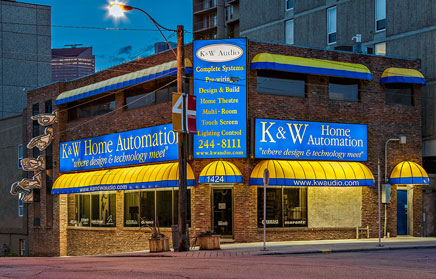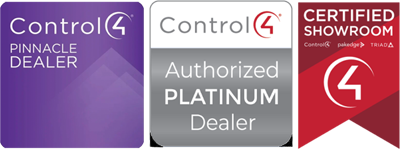Tip #41:
The NTSC (North American Television Standards Committee) set our current video standard. If you have a TV, 27″ or larger, you’ve noticed that the picture is made up of many horizontal lines (exactly 525). The TV draws the image on the screen, as opposed to flashing it on the screen like a film projector. If you look at a still image, that image is 525 horizontal lines called a frame. In NTSC, there are 30 frames drawn in one second. As well, in NTSC, the image is interlaced. This means the frame is broken down into 2 halves, odd and even lines. Each one of these sets of lines is a field. That image, made up of 262 ½ lines and 2 fields, equals a frame. Frames are drawn one after another, so, frame 2 even lines are drawn after frame 1 odd lines. 60 field lines (30×2) are drawn per second.
These numbers relate to an important number when talking video projectors – Scan Rate. It tells us how many lines a second it can draw. Compare it to a cars top speed. We take the number of lines in a frame (525), multiply it by the number of frames in a second (30) and we get 15,750. This number is referred to as 15,750 Hertz or 15.75 Kilohertz (Khz). Since our TV works in NTSC, the scan rate (or speed) is fixed at 15.75 Khz. Line Doublers and Quadruplers require a projector to run at higher speeds or scan rates. This is why a projector or television designed to work only with NTSC signals can’t use these video processing devices. They won’t do the required “top speed”.
A line doubler doesn’t actually double the amount of lines in an NTSC signal. It doubles the number of lines you SEE in a second. The first thing a line doubler does is store two fields or, an entire frame. It then sends that frame to the projector twice as fast as a normal (60 frames per second instead of 30). It sends each frame to the projector twice in the same amount of time as a NTSC source sends one. Thus, a line doubler is also called a scan doubler. In addition to scan doubling, a line doubler also sends information in a Progressive fashion as opposed to interlaced. That means the projector will now draw line 1 then 2,3,4Ö525, instead of drawing the odd lines first and then the even lines, resulting in less visible scan lines (the dark lines in between). This combined with the scan doubling will give you very film-like clarity from large screen images.
Let’s figure out what the scan rate requirements are for a projector to be hooked up successfully to a line doubler. We take the number of lines in a frame (525) then multiply that number by the number of frames displayed in a second (60). The result is 31,500. Therefore, a projector must scan at 31.5 Khz. As well, if you want your projector to be able to reproduce NTSC and line doubled images your projector must scan from 15.75 Khz up to 31.5Khz.
A quadrupler is the next step, it doubles the number of lines that originally came from of your NTSC source, as well as doubling the scan rate. Remember the number of lines that are in a frame in the NTSC standard, 525. A quadrupler will look at that 525 line frame and figure out what should go in between these lines and create them! A quadrupler outputs 1050 lines in one frame giving twice the picture you had before. As with a line doubler a quadrupler sends out 60 frames per second. Quadruplers are only used on very high end video projectors. They are so sharp that even with a line doubler the scan lines are very apparent. These projectors also have the scan rate needed to work with a line quadrupler. And now, more math.
We take the number of lines in a frame (now 1050) and multiply that by the number of frames drawn in one second(60) and we get an answer of 63,000. Which means if you want your projector to be wired to a quadrupler, the projector must scan to 63Khz! This is a serious projector, typically very expensive, but, you would swear you were looking at film. Even on very large screens, sitting very close, there are no apparent scan lines.


